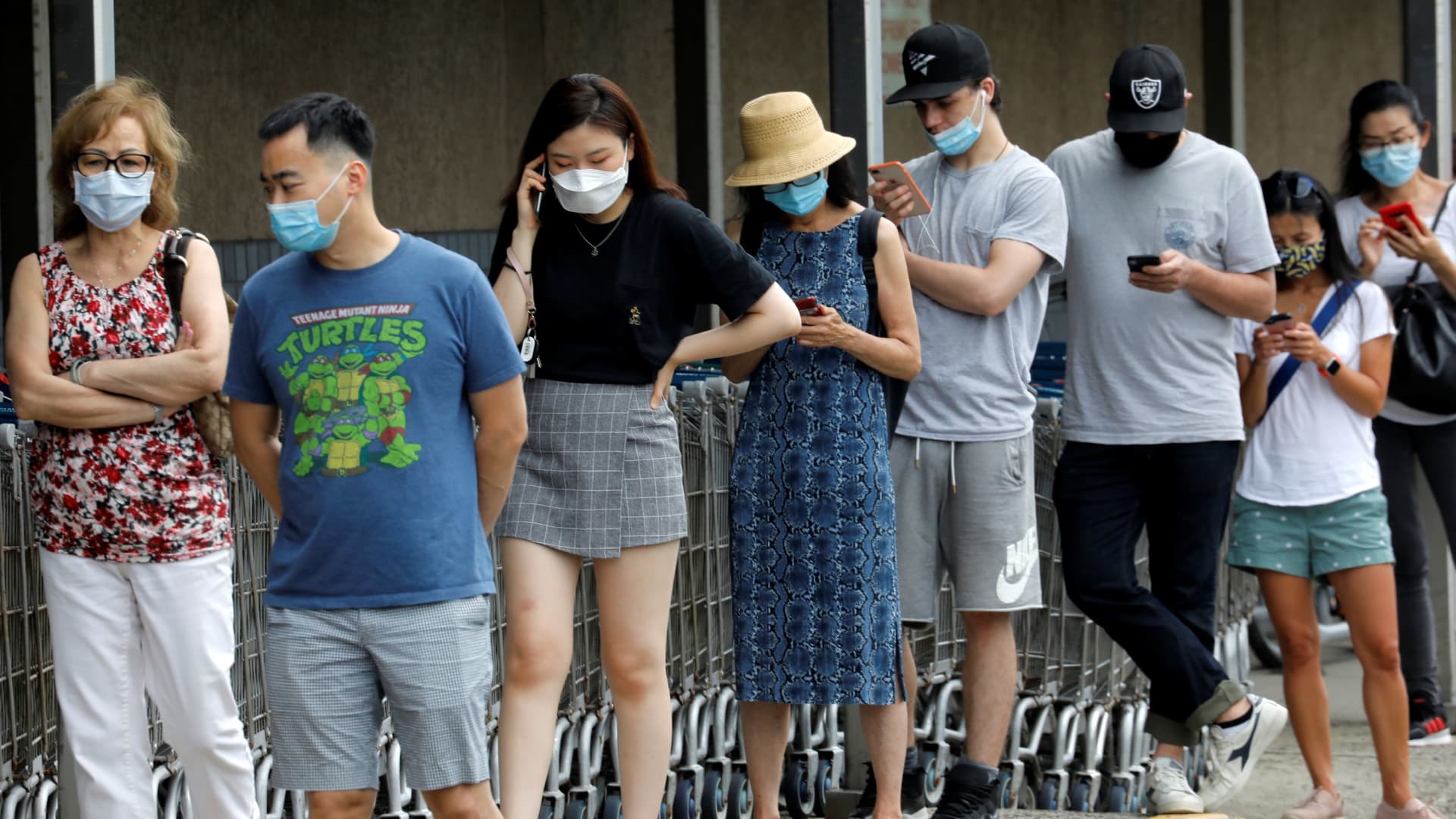Now, specialists say, day by day case counts do not imply what they used to — making them a way more flawed metric. People ought to nonetheless take precautionary measures in opposition to Covid, however for an in any other case wholesome individual, the common case is not almost as severe because it as soon as was: The majority of Americans are actually vaccinated, and up to date variants and subvariants are inflicting much less extreme types of sickness.
That’s excellent news, after all, however it does make it harder to gauge your pandemic risk ranges these days. When is indoor eating a secure wager, and when do you have to order takeout? Should you go to the films this weekend or anticipate the present Covid wave to die down?
Daily case counts can’t reply these questions on their very own anymore. Luckily, specialists say there is a collection of metrics you can monitor alongside day by day instances to help you make these varieties of knowledgeable selections. Here’s what you want to know:
How day by day case counts can nonetheless be helpful
First: Focus on local cases in your area reasonably than nationwide information, “as a result of the timing of varied peaks and valleys differs from place to place,” Noymer tells CNBC Make It. You can monitor native Covid information on the Centers for Disease Control and Prevention’s (CDC) county-level (*4*), alongside most state and county well being division web sites.
From there, Noymer recommends ” tendencies” — like evaluating instances from one week to the following — reasonably than the particular numbers.
“When issues worsen, we must always change our habits,” he says. “At that time, masking in public indoor areas is one thing that folks ought to undoubtedly think about. It’s comparatively straightforward to do, and we all know it really works.”
You must also monitor hospitalizations and ICU numbers
That’s why Noymer recommends hospitalization and ICU numbers in tandem. In Orange County, California, the place he is primarily based, hospitalizations have been “swelling” lately, whereas ICU numbers “have been fairly low and steady,” he says. “I’ve used that to infer that many of the loads of the hospitalizations are literally incidental instances, and Covid infections aren’t as severe as earlier than.”
You may also need to watch native hospitalization and ICU numbers for your particular age group, to higher consider your personal private risk at any given time. It’s a tactic endorsed by Dr. Jason Wilson, an emergency drugs doctor at Tampa General Hospital and professor on the University of South Florida, who says it can help you “get a way of how severe instances are at a given time.”
You in all probability do not want to pay shut consideration to loss of life charges whereas assessing your present stage of risk. They’re a “lagging indicator,” Noymer says — which means they’re higher at exhibiting how unhealthy the pandemic was a pair weeks in the past, reasonably than proper now.
The ‘p.c optimistic’ metric can even be useful in small doses
There’s a typical false impression that the determine refers to the share of people that have examined optimistic for Covid out of a whole inhabitants. In actuality, it is the share of people that examined optimistic out of the quantity of people that received examined.
That makes it a troublesome stat to interpret. Earlier within the pandemic, each take a look at outcome was reported to companies just like the CDC. Now, the testing numbers despatched to authorities companies largely come from the PCR exams individuals take to affirm their optimistic at-home take a look at outcomes.
Percent optimistic charges can even have totally different meanings in numerous localities, relying on the prevalence of Covid testing throughout varied pockets of the U.S. So to be taught probably the most from this metric, Noymer suggests the way it adjustments “over comparatively brief time frames, in the identical place.”
In different phrases, the precise numbers for this metric aren’t actually that useful. Instead, listen to whether or not the positivity price in your space rises or falls from week-to-week.
Think of these metrics just like the climate
Moving ahead, Wilson suggests utilizing Covid metrics like a climate forecast: not a assure, however a device for assessing your risk and taking the mandatory precautions.
Get within the behavior of checking these Covid measures usually, he says — particularly when getting Covid and having to quarantine would adversely have an effect on your upcoming plans. After all, you would not seek the advice of the climate forecast as soon as after which assume that situation will stay the identical for the remainder of the month.
Similarly, Wilson says, checking a number of Covid metrics supplies a extra full image of your risk, the best way that temperature, humidity, and forecasted precipitation says extra in regards to the climate than the temperature alone.
“This is an effective analogy for a way we’re in all probability going to cope with Covid within the indefinite future,” he says. “It’ll help us make cheap selections.”
Wilson recommends bookmarking the CDC’s county-level data tracker. Enter your state after which your county to deliver up a web page of Covid metrics, together with a dashboard that shows a color-coded stage of risk — inexperienced for low, yellow for medium, orange for prime — and recommended precautions for every stage.
“It’s a quick-glance device that can help you perceive how to be just a little safer at a given time,” says Wilson. “If I have a look at the CDC dashboard and see orange, I’m placing a masks on after I go to any indoor areas.”
Sign up now: Get smarter about your money and career with our weekly newsletter
Don’t miss:

